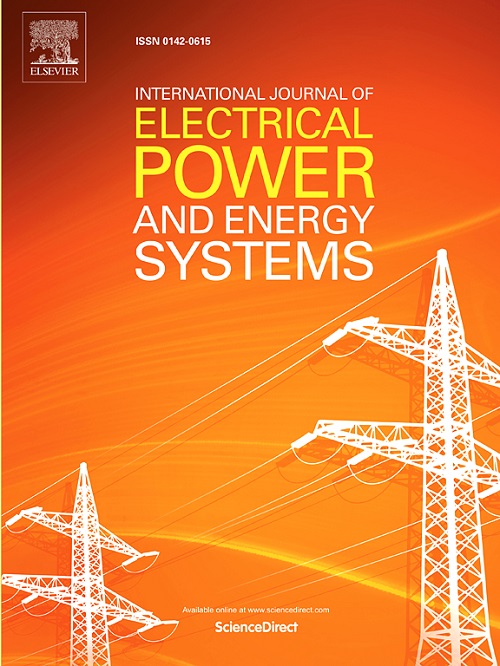基于高阶图卷积模型的数据物理联合驱动N-k静态安全评估
IF 5
2区 工程技术
Q1 ENGINEERING, ELECTRICAL & ELECTRONIC
International Journal of Electrical Power & Energy Systems
Pub Date : 2025-09-25
DOI:10.1016/j.ijepes.2025.111128
引用次数: 0
摘要
在可再生能源渗透率较高的电力系统中,数据驱动的N-k静态安全评估(N-k SSA)在应急风险分析中起着至关重要的作用。为了提高预测鲁棒性和增强模型捕捉扰动后长链潮流传输的能力,本文提出了一种数据物理联合驱动的N-k SSA方案(N-k DPSSA)。具体而言,引入了多跳图卷积网络(MPGCN)来扩展模型的接受域,从而更好地识别长链功率再分配模式。设计了支路特征提取器(BFE)和支路功率预测器(BPP),用于直接提取支路级特征和估计支路潮流。此外,开发了一个物理知情的Kirchhoff鉴别器(KD)模块,用于在宽松的Kirchhoff当前定律约束下验证预测有效性并识别不确定样本,从而提高整体鲁棒性。提出的DPSSA框架在IEEE 39总线系统、IEEE 300总线系统和中国一个实际的省级电力系统上进行了验证。实验结果表明,与传统方法相比,该方法在测试集上的准确率提高了2%以上,在以前未见过的拓扑上的准确率提高了10%以上。预测结果的可视化进一步证明了该模型在处理长链潮流传输方面的优势及其对结构变化的弹性,验证了其在大规模系统安全评估中实际部署的潜力。本文章由计算机程序翻译,如有差异,请以英文原文为准。
Data-physics joint-driven N-k static security assessment with higher-order graph convolution model
In power systems with a high penetration of renewable energy, data-driven N-k static security assessment (N-k SSA) plays a critical role in contingency risk analysis. To improve prediction robustness and enhance the model’s capability to capture long-chain power flow transfers after disturbances, this paper proposes a data-physics joint-driven N-k SSA scheme (N-k DPSSA). Specifically, a multi-hop graph convolution network (MPGCN) is introduced to expand the model’s receptive field, enabling better identification of long-chain power redistribution patterns. A branch feature extractor (BFE) and a branch power predictor (BPP) are designed to extract branch-level features and estimate branch power flows directly. Furthermore, a physics-informed Kirchhoff discriminator (KD) module is developed to verify prediction validity under relaxed Kirchhoff’s current law constraints and identify uncertain samples, thus improving overall robustness. The proposed DPSSA framework is validated on the IEEE 39-bus system, the IEEE 300-bus system, and a real provincial-level power system in China. Experimental results show that compared with traditional methods, the proposed approach achieves more than 2% improvement in accuracy on the test set and over 10% improvement in previously unseen topologies. Visualization of prediction outcomes further demonstrates the model’s superiority in handling long-chain power flow transfers and its resilience to structural variations, validating its potential for practical deployment in large-scale system security assessment.
求助全文
通过发布文献求助,成功后即可免费获取论文全文。
去求助
来源期刊
CiteScore
12.10
自引率
17.30%
发文量
1022
审稿时长
51 days
期刊介绍:
The journal covers theoretical developments in electrical power and energy systems and their applications. The coverage embraces: generation and network planning; reliability; long and short term operation; expert systems; neural networks; object oriented systems; system control centres; database and information systems; stock and parameter estimation; system security and adequacy; network theory, modelling and computation; small and large system dynamics; dynamic model identification; on-line control including load and switching control; protection; distribution systems; energy economics; impact of non-conventional systems; and man-machine interfaces.
As well as original research papers, the journal publishes short contributions, book reviews and conference reports. All papers are peer-reviewed by at least two referees.

 求助内容:
求助内容: 应助结果提醒方式:
应助结果提醒方式:


